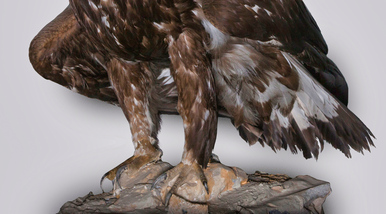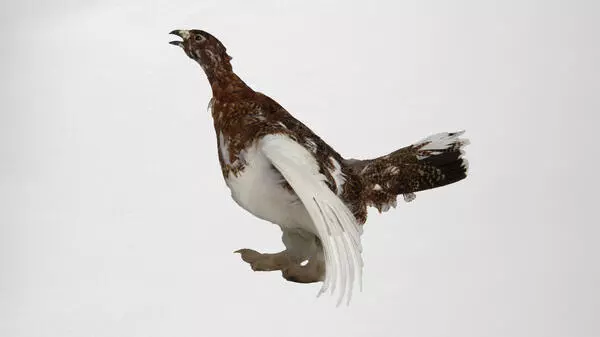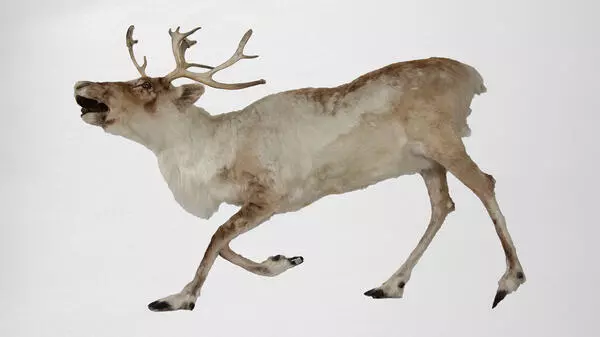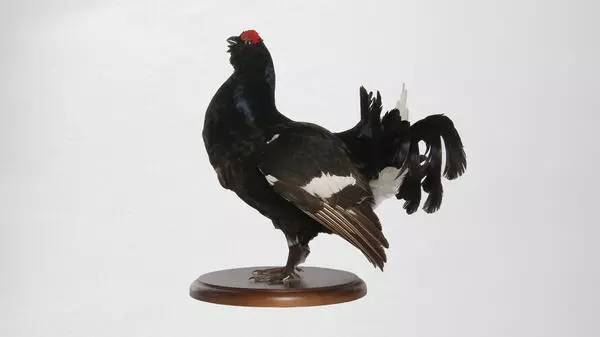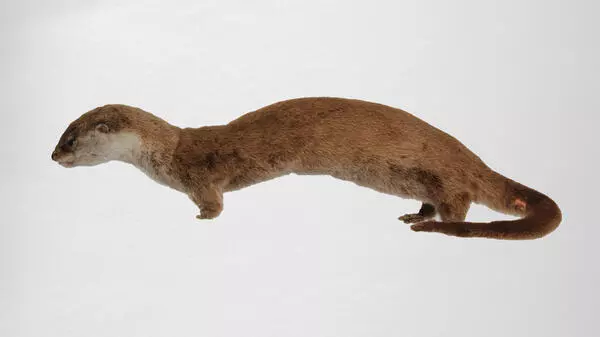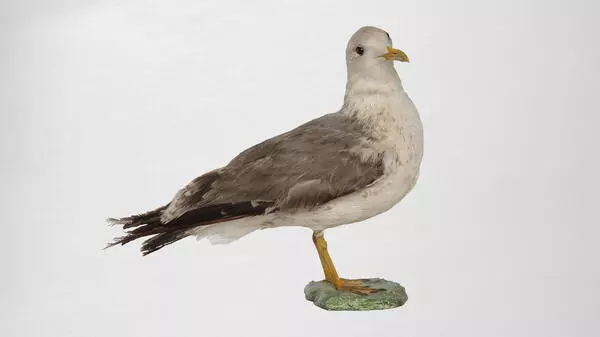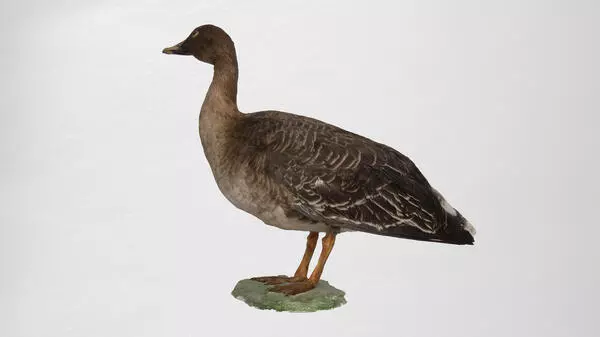The exhibition of the Biology museum presents a sculptural reconstruction of a female Ardipithecus (Ardipithecus ramidus), also known as Ardi. These great apes from the group of early Australopithecines lived in East Africa about 4,4 million years ago.
The early Australopithecines were the first primates to have the ability to walk upright, but it has not yet fully formed. In Ardipithecus, the signs of a human and an ape were equally combined. The structure of their pelvis and limbs indicates that these primates moved in a variety of ways. Ardipithecus not only walked, but also climbed trees a lot, swung on their hands and even ran on all fours, leaning on their palms. Their feet already had longitudinal and transverse arches, but they could still deftly grab and hold objects.
The structure of the skull of the Ardipithecus was quite primitive. Ardi’s height was about 120 centimeters, weight about 50 kilograms. The brain of these primates was equal to 300-350 cubic centimeters — much less than that of modern chimpanzees. Ardipithecus fed mainly on plants — both fruits and shoots with leaves. However, their diet was quite diverse: they remained omnivorous, as evidenced by the structure of their teeth. Ardi’s canine teeth are smaller than those of a chimpanzee.
You can find out what Ardi looked like thanks to the method of facial reconstruction, which was developed by the Soviet anthropologist Mikhail Gerasimov. It allows you to reconstruct the appearance of both humans and apes. In addition to anthropological and historical studies, the method of facial reconstruction is actively used in the forensics.
It is based on the dependence of the structure of the parts of the face on the bone base lying under the soft tissues. With a well-preserved skull, an anthropologist can simulate the thickness and shape of the soft tissues surrounding the bones. Even if the skull has been preserved in the form of individual fragments or just pieces, thanks to this technology it can be reliably restored.
The early Australopithecines were the first primates to have the ability to walk upright, but it has not yet fully formed. In Ardipithecus, the signs of a human and an ape were equally combined. The structure of their pelvis and limbs indicates that these primates moved in a variety of ways. Ardipithecus not only walked, but also climbed trees a lot, swung on their hands and even ran on all fours, leaning on their palms. Their feet already had longitudinal and transverse arches, but they could still deftly grab and hold objects.
The structure of the skull of the Ardipithecus was quite primitive. Ardi’s height was about 120 centimeters, weight about 50 kilograms. The brain of these primates was equal to 300-350 cubic centimeters — much less than that of modern chimpanzees. Ardipithecus fed mainly on plants — both fruits and shoots with leaves. However, their diet was quite diverse: they remained omnivorous, as evidenced by the structure of their teeth. Ardi’s canine teeth are smaller than those of a chimpanzee.
You can find out what Ardi looked like thanks to the method of facial reconstruction, which was developed by the Soviet anthropologist Mikhail Gerasimov. It allows you to reconstruct the appearance of both humans and apes. In addition to anthropological and historical studies, the method of facial reconstruction is actively used in the forensics.
It is based on the dependence of the structure of the parts of the face on the bone base lying under the soft tissues. With a well-preserved skull, an anthropologist can simulate the thickness and shape of the soft tissues surrounding the bones. Even if the skull has been preserved in the form of individual fragments or just pieces, thanks to this technology it can be reliably restored.


